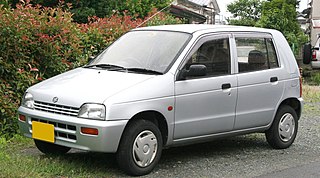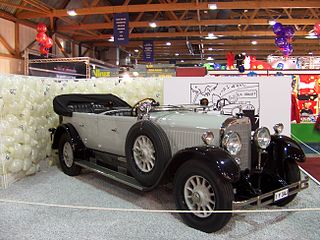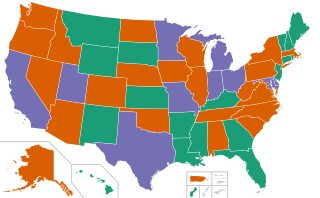
The Suzuki Alto is a kei car produced by Suzuki since 1979. The model, currently in its ninth generation, was first introduced in 1979 and has been built in many countries worldwide. The Alto originated as a commercial vehicle derivative of the Fronte, but over time the Alto nameplate gained in popularity and by 1988 it replaced the Fronte name completely. The Alto badge has often been used on different cars in Japan and in export markets, where it is considered a city car.

The Mitsubishi Minica is a model series of kei cars, produced by Mitsubishi Motors Corp. (MMC) over five generations, from 1962 to 2011, mainly for the Japanese domestic market.

The Honda Today is a kei car produced by Japanese automaker Honda beginning in 1985. It was replaced by the Honda Life in 1998.

The Fiat 1100 is a small family car produced from 1953 until 1969 by the Italian manufacturer Fiat. It was an all-new unibody replacement for the Fiat 1100 E, which descended from the pre-war, body-on-frame Fiat 508 C Balilla 1100. The 1100 was changed steadily and gradually until being replaced by the new Fiat 128 in 1969. There were also a series of light commercial versions of the 1100 built, with later models called the Fiat 1100T, which remained in production until 1971. The Fiat 1100 D also found a long life in India, where Premier Automobiles continued to build the car until the end of 2000.

Morris Oxford is a series of motor car models produced by Morris of the United Kingdom, from the 1913 'bullnose' Oxford to the Farina Oxfords V and VI.

The Subaru Sambar is a cabover truck and microvan manufactured and marketed by Subaru as Japan's second truck compliant with the country's strict Keitora (軽トラ) or Kei vehicle tax class, after the Kurogane Baby. Introduced in 1961 in microvan and Kei pickup configurations, the Sambar remains in production, now in its eighth generation — beginning with the sixth generation as a rebadged Daihatsu Hijet.

The W-class trams are a family of electric trams built by the Melbourne & Metropolitan Tramways Board (MMTB) between 1923 and 1956. Over the 33 years of production, 752 vehicles spanning 12 sub-classes were constructed, the majority at the MMTB's Preston Workshops.

The Opel 4 PS, popularly known as the Laubfrosch (treefrog), is a small two-seater car introduced by the auto maker Opel early in 1924. Subsequently, various versions of the little Laubfrosch were produced until it was replaced by the Opel 1.2 litre.

In the United States, road signs are, for the most part, standardized by federal regulations, most notably in the Manual on Uniform Traffic Control Devices (MUTCD) and its companion volume the Standard Highway Signs (SHS).

The Wanderer W22 was an upper-middle-class six-cylinder sedan introduced by Auto Union under the Wanderer brand in 1933. It replaced the W20 8/40 PS, from which it inherited its OHV engine, developed by Ferdinand Porsche.

The fifth generation of the Chevrolet Impala is a line of full-size cars produced by Chevrolet from the 1971 to 1976 model years. The largest generation of the model line, the fifth-generation Impala grew to a 121.5-inch wheelbase

The Opel 1,2 Liter is a small car manufactured by Opel between 1931 and 1935. The 1,2 Liter was replaced in 1935 by the Opel P4 which was broadly similar but employed a new engine and continued in production until December 1937. For just one year, in 1933, the manufacturer also offered the Opel 1,0 Liter which was a smaller engined version of the 1,2 Liter. The Opel 1,2 Liter replaced the last version of the Opel Laubfrosch and was itself first complemented and then effectively replaced by the more roomy Opel Kadett, which had itself already entered production in 1935.

The Benz 10/25 PS was a midsize automobile introduced by Benz & Cie in 1912. The same year stated maximum output was increased which meant a name change to Benz 10/30 PS. The model disappeared for three years following the First World War but returned in 1921. A further power increase in 1926 meant another name change, now to Benz 10/35 PS. Following the "fusion" between the Daimler and Benz companies, production of the Benz 10/35 PS ended in 1927.

The Mercedes 15/70/100 PS was a large automobile introduced by Daimler in 1924. Production continued till 1929 by which time Daimler had merged with Benz & Cie as a result of which the car's name had changed to Mercedes-Benz Typ 400.

The Mercedes 24/100/140 PS was a large luxury car introduced by Daimler of Untertürkheim in 1924. Production continued until 1929 by which time Daimler had merged with Benz & Cie and the car's name changed to Mercedes-Benz Typ 630. The car was conceptually and structurally similar to the contemporary Mercedes 15/70/100 PS, but the 24/100/140 PS was longer, heavier, more powerful, faster and more expensive.

The Mercedes-Benz W02 was a midsize six-cylinder two-litre-engined automobile introduced by Daimler-Benz at the Berlin Motor Show in October 1926. It was developed in some haste under the manufacturer's Technical Director, Ferdinand Porsche in parallel with the smaller Mercedes-Benz W 01 and the larger three-litre-engined Mercedes-Benz W03 following the creation of Daimler-Benz, formally in July 1926, from the fusion of the Daimler and Benz & Cie auto-businesses.

The Mercedes-Benz W03 was a large six-cylinder-engined automobile introduced as the Mercedes-Benz 12/55 PS and, initially, as the Mercedes-Benz Typ 300, by Daimler-Benz at the Berlin Motor Show in October 1926. It was developed in some haste under the manufacturer's Technical Director, Ferdinand Porsche in parallel with the smaller Mercedes-Benz W 01 and the two-litre-engined Mercedes-Benz W02 following the creation of Daimler-Benz, formally in July 1926, from the fusion of the Daimler and Benz & Cie auto-businesses.

Road signs in Australia are regulated by each state's government, but are standardised overall throughout the country. In 1999, the National Transport Commission (NTC), created the first set of Rules of the Road for Australia. Australian road signs use the AS 1744:2015 fonts, which is the Highway Gothic typeface.

The Oldsmobile Light Eight was an automobile produced by the Oldsmobile Division of General Motors in roadster, two-door coupe, four-door sedan from between 1916 and 1923. It was powered by a sidevalve V8 engine, the maker's first, and shared with the 1916 Oakland Model 50.

Road signs in Puerto Rico are regulated in the Manual de Rotulación para las Vías Públicas de Puerto Rico, Puerto Rico’s supplement to the Manual on Uniform Traffic Control Devices (MUTCD), the standard for road signs, signals, and markings in the United States. It is developed by the Puerto Rico Highways and Transportation Authority (PRHTA) "in substantial conformance to" the national MUTCD developed by the Federal Highway Administration.






















